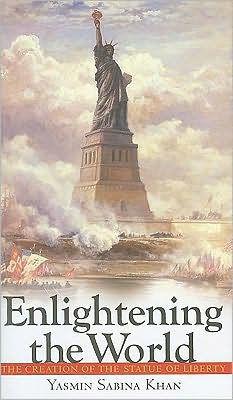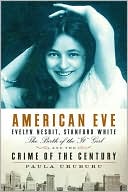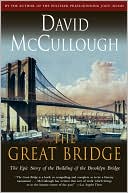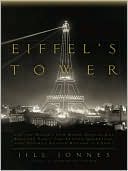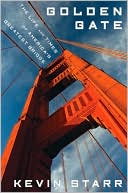Enlightening the World: The Creation of the Statue of Liberty
Conceived in the aftermath of the American Civil War and the grief that swept France over the assassination of Abraham Lincoln, the Statue of Liberty has been a potent symbol of the nation's highest ideals since it was unveiled in 1886. Dramatically situated on Bedloe's Island (now Liberty Island) in the harbor of New York City, the statue has served as a reminder for generations of immigrants of America's long tradition as an asylum for the poor and the persecuted. Although it is among the...
Search in google:
Conceived in the aftermath of the American Civil War and the grief that swept France over the assassination of Abraham Lincoln, the Statue of Liberty has been a potent symbol of the nation's highest ideals since it was unveiled in 1886. Dramatically situated on Bedloe's Island (now Liberty Island) in the harbor of New York City, the statue has served as a reminder for generations of immigrants of America's long tradition as an asylum for the poor and the persecuted. Although it is among the most famous sculptures in the world, the story of its creation is little known. In Enlightening the World, Yasmin Sabina Khan provides a fascinating new account of the design of the statue and the lives of the people who created it, along with the tumultuous events in France and the United States that influenced them. Khan's narrative begins on the battlefields of Gettysburg, where Lincoln framed the Civil War as a conflict testing whether a nation "conceived in liberty, and dedicated to the proposition that all men are created equal . . . can long endure." People around the world agreed with Lincoln that this question-and the fate of the Union itself-affected the "whole family of man." Inspired by the Union's victory and stunned by Lincoln's death, Édouard-René Lefebvre de Laboulaye, a legal scholar and noted proponent of friendship between his native France and the United States, conceived of a monument to liberty and the exemplary form of government established by the young nation. For Laboulaye and all of France, the statue would be called La Liberté Éclairant le Monde-Liberty Enlightening the World. Following the statue's twenty-year journey from concept toconstruction, Khan reveals in brilliant detail the intersecting lives that led to the realization of Laboulaye's dream: the Marquis de Lafayette; Alexis de Tocqueville; the sculptor Auguste Bartholdi, whose commitment to liberty and self-government was heightened by his experience of the Franco-Prussian War; the architect Richard Morris Hunt, the first American to study architecture at the prestigious École des Beaux-Arts in Paris; and the engineer Gustave Eiffel, who pushed the limits for large-scale metal construction. Also here are the contributions of such figures as Senators Charles Sumner and Carl Schurz, the artist John La Farge, the poet Emma Lazarus, and the publisher Joseph Pulitzer. While exploring the creation of the statue, Khan points to possible sources-several previously unexamined-for the design. She links the statue's crown of rays with Benjamin Franklin's image of the rising sun and makes a clear connection between the broken chain under Lady Liberty's foot and the abolition of slavery. Through the rich story of this remarkable national monument, Enlightening the World celebrates both a work of human accomplishment and the vitality of liberty.Publishers WeeklyDespite countless publications on New York harbor's Statue of Liberty, no previous study has detailed its complex history. Independent scholar Khan ably fills this gap with a lucid account connecting France's widespread grief over Abraham Lincoln's 1865 assassination with that country's own struggles to establish a lasting democracy. Khan shows how Édouard-René Lefebvre de Laboulaye, a legal scholar and celebrant of French-American friendship, led others to design and construct what was officially called Liberty Enlightening the World. Other principals included the distinguished sculptor Auguste Bartholdi; visionary engineer Gustave Eiffel; prominent architect Richard Morris Hunt; and powerful publisher and fund-raiser Joseph Pulitzer. Khan sketches their lives plus that of Emma Lazarus, whose famous sonnet was added to the statue's pedestal in 1903. Khan suggests that the statue's crown of rays may derive from Benjamin Franklin's image of a sun rising over the new republic and that the broken chain under Lady Liberty's foot symbolizes slavery's abolition after the Civil War. Also intriguing were denunciations by women and African-Americans alike of the opening-day ceremonies as exaggerating the nation's commitment to liberty for all An important book for general audiences. B&w photos. (Mar.)
Introduction 11 The Idea 82 A Champion of Liberty 173 Bonds of Friendship 334 The French Sculptor 475 Bartholdi's Tour of America and the American Architect 616 Washington, D.C., as a National Symbol 827 Bartholdi's Design 998 The Statue Takes Shape 1179 The American Committee and the French Engineers 13310 Hunt Designs a Pedestal 14711 Fundraising and a Visionary Sonnet 15912 The Unveiling 176Notes 187Bibliography 213Index 225
\ From the Publisher"Enlightening the World is an original and illuminating exploration of the complex history of Bartholdi's Statue of Liberty and a fascinating quest for the ideas and values it represented for both the French and American people of the nineteenth century."-Susan Dunn, author of Sister Revolutions: French Lightning, American Light\ "In drawing the Statue of Liberty deeper into the context of American political ideology, Yasmin Sabina Khan reminds us that though the 'Goddess of Liberty' hailed from France, much of the thought behind her creation was informed by the American achievement of political democracy"-Barry Moreno, Ellis Island Immigration Museum and the Statue of Liberty National Monument, National Park Service, editor of The Statue of Liberty Encyclopedia\ "Enlightening the World is a superb account of the high ideals that drove the conception, design, and execution of the Statue of Liberty. Yasmin Sabina Khan makes it clear that the monument we see today emerged from the age of democratic revolutions and liberal political ideologies such as the rights of man and freedom from tyranny and slavery. This important book explains why the Statue of Liberty still has immense relevance today."-John Bodnar, Chancellor's Professor of History, Indiana University, author of Bonds of Affection: Americans Define their Patriotism and coauthor of The Changing Face of the Statue of Liberty\ "Despite countless publications on New York Harbor's Statue of Liberty, no previous study has detailed its complex history. Yasmin Sabina Khan ably fills this gap with a lucid account connecting France's widespread grief over Abraham Lincoln's 1865 assassination with that country's own struggles to establish a lasting democracy. An important book for general audiences."-Publishers Weekly\ "Based on research in U.S. and French archives, this vigorously written book focuses on the conception, design, construction, and installation of one of America's iconic symbols. Khan, an engineer herself, presents a linear account of the effort from 1865 to 1886 to memorialize French participation in the American Revolution, grief at President Lincoln's assassination, France's transition to democracy, and the universal cause of freedom. She supplements her narrative with frequent discussions of the meaning of liberty, the importance of classical design in 19th-century America, and the Franco-American connection from Lafayette to the Third Republic. . . . Rather than analyzing the later meanings of the statue, Khan's annotated book tells of its imaging and building in the context of its time. Her definitions of architectural and engineering methods will please the lay reader."-Library Journal\ "In 1886, after twenty years of planning, Auguste Bartholdi's Liberty Enlightening the World was unveiled in New York Harbor. Bartholdi's masterwork continues to symbolize a shared tradition of political liberty, but as Yasmin Sabina Khan's Enlightening the World shows, some of the ambivalence that has characterized Franco-American relations from the beginning are visible in the statue itself, and in the process by which the French politician and historian Édouard Laboulaye's brainchild became a 400-foot colossus of metal and stone."-Times Literary Supplement\ "Two decades ago, disturbing results of a survey indicated that French high-school students knew more than their American counterparts about the Statue of Liberty. This excellent account of the conception, design, and construction of The Lady can remedy that imbalance. Khan . . . begins by describing the political and cultural context in both the United States and France following the Civil War. . . . It is useful to be reminded that America was viewed as a beacon of progress and liberty to many French people a century ago. The concept of a monument to that liberty was promoted by a legal scholar, Édouard-René Lefébvre de Laboulaye, and Khan eloquently describes how the concept turned into reality over a span of twenty years. Along the way, she provides many fascinating vignettes and portraits of several of the key political and artistic personalities who contributed to the project. This is a beautifully written tribute to a great monument and to those who made its creation possible."-Booklist\ "Yasmin Sabina Khan's book provides a fresh perspective on the twenty-one year struggle to bring the idea for such a monument to fruition. Following a loosely chronological order, Khan charts the monument's journey from conception in 1865 to unveiling in 1886 by exploring the lives and political ideals of those who designed and built the statue. Woven into these personal stories is a broader account of the political situation both in France and the United States during the period in question."- Wendy Nolan Joyce, Nineteenth-Century French Studies (Spring-Summer 2011)\ "In Enlightening the World, Yasmin Sabina Khan presents the compelling story of the 151-foot colossus that dominates Liberty Island in New York City. While the general story of the statue's creation is well known, the details of its construction are not. Khan's analysis focuses on the most significant events of the period and how they affected the twenty-one-year building process, as well as the five men who brought the statue to fruition: Édouard-René Lebre de Laboulaye, Frédéric Auguste Bartholdi, Gustave Eiffel, Richard Morris Hunt, and Joseph Pulitzer. . . . The short, yet comprehensive, chapters are best targeted to an upper-level undergraduate and graduate student audience. Khan's thorough explanation of the artistic evolution of the statue, which is rooted in archival research, should also appeal to specialists in the fields of history, art history, and architecture. . . . Khan's book definitively establishes that while the Statue of Liberty originated as a gift of goodwill between two sister republics, it also became a symbol of the global role of France and the United States as guardians of republican ideals."-Heidi A. Strobel, H-France, H-Net Reviews\ \ \ \ \ \ Library JournalBased on research in U.S. and French archives, this vigorously written book focuses on the conception, design, construction, and installation of one of America's iconic symbols. Khan (Engineering Architecture: The Vision of Fazlur R. Khan), an engineer herself, presents a linear account of the effort from 1865 to 1886 to memorialize French participation in the American Revolution, grief at President Lincoln's assassination, France's transition to democracy, and the universal cause of freedom. She supplements her narrative with frequent discussions of the meaning of liberty, the importance of classical design in 19th-century America, and the Franco-American connection from Lafayette to the Third Republic. Although sculptor Auguste Bartholdi, pedestal architect Richard Morris Hunt, and engineer Gustave Eiffel were chiefly responsible for the statue, the essential roles played by pro-American scholar Edouard Laboulaye, politicians Carl Schurz and Charles Sumner, and newspaper publisher and fund raiser Joseph Pulitzer are also detailed. General readers will learn surprises (albeit covered before), such as that France had to take the initiative to finance the statue. VERDICT Rather than analyzing the later meanings of the statue, Khan's annotated book tells of its imaging and building in the context of its time. Her definitions of architectural and engineering methods will please the lay reader. Recommended.—Frederick J. Augustyn Jr., Library of Congress\ \ \ Publishers WeeklyDespite countless publications on New York harbor's Statue of Liberty, no previous study has detailed its complex history. Independent scholar Khan ably fills this gap with a lucid account connecting France's widespread grief over Abraham Lincoln's 1865 assassination with that country's own struggles to establish a lasting democracy. Khan shows how Édouard-René Lefebvre de Laboulaye, a legal scholar and celebrant of French-American friendship, led others to design and construct what was officially called Liberty Enlightening the World. Other principals included the distinguished sculptor Auguste Bartholdi; visionary engineer Gustave Eiffel; prominent architect Richard Morris Hunt; and powerful publisher and fund-raiser Joseph Pulitzer. Khan sketches their lives plus that of Emma Lazarus, whose famous sonnet was added to the statue's pedestal in 1903. Khan suggests that the statue's crown of rays may derive from Benjamin Franklin's image of a sun rising over the new republic and that the broken chain under Lady Liberty's foot symbolizes slavery's abolition after the Civil War. Also intriguing were denunciations by women and African-Americans alike of the opening-day ceremonies as exaggerating the nation's commitment to liberty for all An important book for general audiences. B&w photos. (Mar.)\ \
